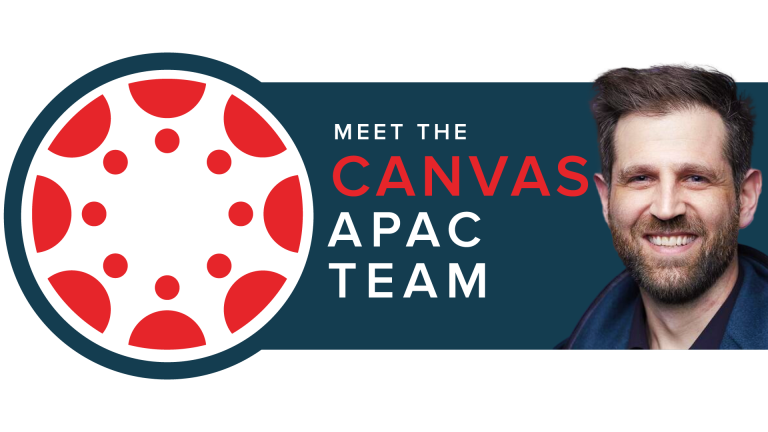Is your K-12 school missing out on the power of harnessing a single template for all your courses?
Such templates or blueprints can:
- Drive pedagogical change
- Save teachers’ time
- Give them a useful starting point for lesson writing
- Help assess course quality
- Offer more consistency of courses and learning experiences, yet
- Allow teachers and learners freedom to customise the instruction.
Other benefits include improved learning outcomes and better course design.
These are the findings of OneSchool Global, who developed and started rolling out its templates in early 2021. Its school leaders shared their insights at the APAC 2022 InstructureCon.
OneSchool Global was set up in 1994 by members of the Plymouth Brethren Christian Church in the UK. Today it has 130 campuses and operates in 20 countries, including Australia, New Zealand, Europe, North America and the UK. Internationally, it has 9,500 students, 2,500 staff and offers remote and in-person courses.
Matthew Phillips, Global Director of Education, describes the template as a “consistent tool that draws on best practice” and, by design, underpins the school’s pedagogy. It’s simply three pages long – a front page with a unit heading and overarching information, a content page and a weekly page.
“We have course writing teams as opposed to ‘this is my course. I will design year 9 maths. It means teachers across the country, state or even globally are collaborating on lesson writing. So, the template gives content writers their next steps, and they’re small enough to manage but are very powerful,” said Matthew.
However, he admitted the change process can be “bumpy”. Affecting real change in mindset around instructional design and planning was “critical”.
Worldwide student cohorts
The school encourages teachers to deeply consider ‘how will my students learn from me and what and how will they learn on their own?’, said Matthew.
“Across our global regions, just like across our different faculties within each school, the curriculum varies greatly. So, what is taught obviously varies, but our Learning-to-Learn Framework remains highly consistent. That demands a common template to underpin high standards of [courses] globally.”
Previously, the school had three templates, which led to “teacher frustration about what a good one looked like”.
“Our intention was never to cookie-cut a template because it could become very dry from a student’s point of view. The creative flair has to be within the [course] to incentivise and inspire students. The sweet spot we found was annotating rather than giving exemplars,” said Matthew.
Quality assurance tools
To evaluate its courses, OneSchool Global has harnessed a Cidi Labs’ course development tracker tool called ReadyGO, which plugs into the Canvas LMS. It allows learner designers to predefine elements of a good unit of work across the organisation, and it becomes a checklist for each use of the template. The checklist comprises of:
- Big and guiding questions
- Learning intentions
- Organisation of learning
- Learning activities
- Digital tools
- Language of learning
- Evaluation of learning, and
- Backpack resources.
It doesn’t check for broken links within the modules, but how well teachers are designing the learning for their students.
So far, teachers, parents and students have responded positively to the template’s consistent look and feel and need for minimal clicks.
Managing change happen
OneSchool Global also used the Knoster change management model to map teacher professional development when rolling out the templates and blueprints. The model also worked as a diagnostic tool, said Carolyn Rhodes, Teacher Academy Director for OneSchool Global Australia.
“If we came across some resistance from staff about implementing this, we could backward map and say, there needs to be an incentive, what’s in it for them, to understand the ‘why’.
“Deliberately using the template for professional development before we even asked teachers to build in it was great for getting buy-in. The teachers saw what they could do with it and were asking to get it so they could start using it in their classes.”
The school expected they’d need 18 months to upskill teachers on the template for the initial trial for prioritised courses in Australia, then New Zealand and slowly beyond, but were willing to “push it out if we needed to”.
The rollout is continuing, Carolyn said: “We wanted to be really clear about what would be fixed, what we’d allow to be modified to contextualise. As well, we didn’t expect teachers to do all of their courses at once with the new template – that wouldn’t have been fair.”
The pulse of learning
Digital technology underpins the school’s innovative pedagogy, said Jeff Lloyd, Global Manager of Digital Learning, OneSchool Global, Australia. His school started using the Canvas LMS six years ago - it’s at the core of its operations.
“Canvas can just become a repository for links, resources and worksheets, but it’s so much more than that. We have a suite of digital tools, of which Canvas is right at the centre. We like to think of everything as branching out from Canvas – all of our integrations and LTIs.”
Your school can also embrace the journey to more powerful teaching methods hinging upon the latest technology. Find out more about OneSchool Global’s approach - view the full InstructureCon presentation.
Related Content
 philippines_ched_cmo.png
philippines_ched_cmo.pngBlogs
 meet-canvas-apac-team-avi.png
meet-canvas-apac-team-avi.pngBlogs
 mom_and_baby_with_laptop_2.jpg
mom_and_baby_with_laptop_2.jpgBlogs
